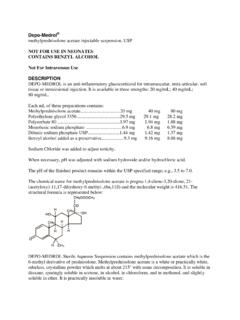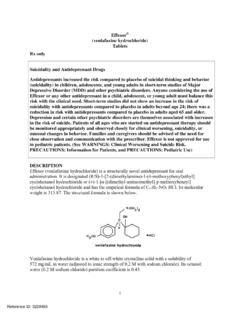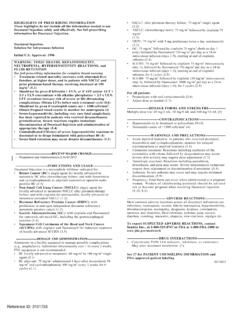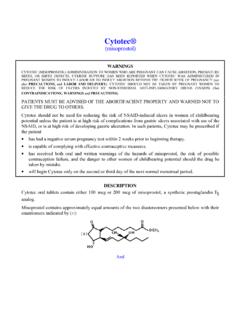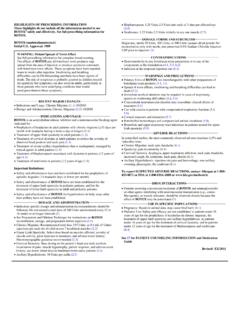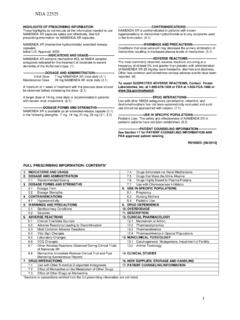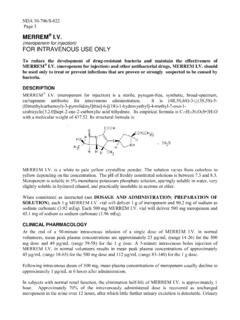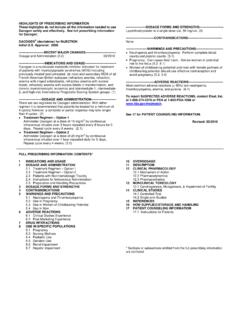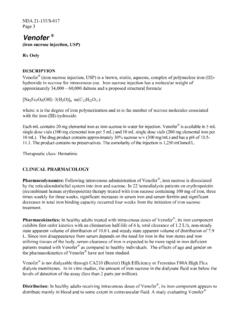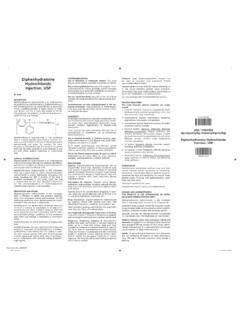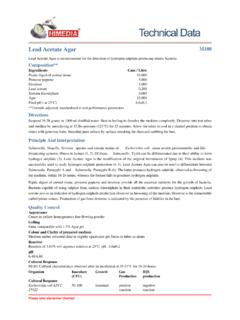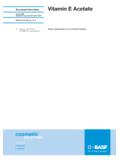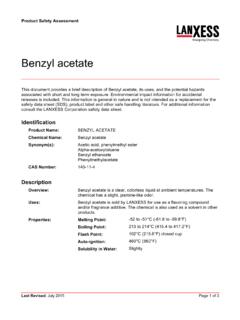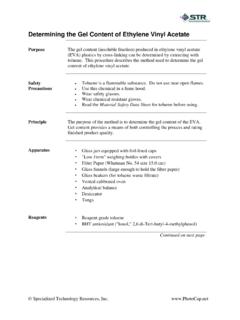Transcription of Viadur (leuprolide acetate implant) DESCRIPTION
1 Viadur (leuprolide acetate implant) DESCRIPTION Viadur (leuprolide acetate implant) is a sterile nonbiodegradable, osmotically driven miniaturized implant designed to deliver leuprolide acetate for 12 months at a controlled rate (Figure A). Viadur incorporates DUROS technology. The system contains 65 mg of leuprolide (free base). Leuprolide acetate is a synthetic nonapeptide analog of naturally occurring gonadotropin-releasing hormone (GnRH or LH-RH). The analog possesses greater potency than the natural hormone. The implant is inserted subcutaneously in the inner aspect of the upper arm. After 12 months, the implant must be removed. At the time an implant is removed, another implant may be inserted to continue therapy. Viadur contains 72 mg of leuprolide acetate (equivalent to 65 mg leuprolide free base) dissolved in 104 mg dimethyl sulfoxide.
2 The 4 mm by 45 mm titanium alloy reservoir houses a polyurethane rate-controlling membrane, an elastomeric piston, and a polyethylene diffusion moderator. The reservoir also contains the osmotic tablets, which are not released with the drug formulation. The osmotic tablets are composed of sodium chloride, sodium carboxymethyl cellulose, povidone, magnesium stearate, and sterile water for injection. Polyethylene glycol fills the space between the osmotic tablets and the reservoir. A minute amount of silicone medical fluid is used during manufacture as a lubricant. The weight of the implant is approximately Figure A Viadur (leuprolide acetate implant) (diagram not to scale) The chemical name is 5-Oxo-L-prolyl-L-histidyl-L-tryptophyl-L -seryl-L-tyrosyl-D-leucyl-L leucyl-L-arginyl-N-ethyl-L-prolinamide acetate (salt), with the following structural formula: CLINICAL PHARMACOLOGY Leuprolide acetate , an LH-RH agonist, acts as a potent inhibitor of gonadotropin secretion when given continuously and in therapeutic doses.
3 Animal and human studies Reference ID: 2888026 indicate that after an initial stimulation, chronic administration of leuprolide acetate results in suppression of ovarian and testicular steroidogenesis. In humans, administration of leuprolide acetate results in an initial increase in circulating levels of luteinizing hormone (LH) and follicle-stimulating hormone (FSH), leading to a transient increase in concentrations of gonadal steroids (testosterone and dihydrotestosterone in males, and estrone and estradiol in premenopausal females). However, continuous administration of leuprolide acetate results in decreased levels of LH and FSH. In males, testosterone is reduced to castrate levels. These decreases occur within 2 to 4 weeks after initiation of treatment.
4 One Viadur Implant nominally delivers 120 micrograms of leuprolide acetate per day over 12 months. Leuprolide acetate is not active when given orally. PHARMACOKINETICS Absorption After insertion of Viadur , mean serum leuprolide concentrations were ng/mL at 4 hours and ng/mL at 24 hours. Thereafter, leuprolide was released at a constant rate. Mean serum leuprolide concentrations were maintained at ng/mL ( to ng/mL; SD = ) for 12 months. Upon removal and insertion of a new Viadur at 12 months, steady-state serum leuprolide concentrations were maintained. Distribution The mean steady-state volume of distribution of leuprolide following 1 mg intravenous (IV) bolus administration to healthy male volunteers was 27 L. In vitro binding to human plasma proteins ranged from 43% to 49%.
5 1 Metabolism In healthy male volunteers administered a 1 mg IV bolus of leuprolide, the mean systemic clearance was L/h, with a terminal elimination half-life of approximately 3 hours, based on a two-compartment A pentapeptide (M-1) is the major leuprolide metabolite upon administration with different leuprolide acetate formulations. No drug metabolism study was conducted with Viadur . Excretion No drug excretion study was conducted with Viadur . Dose Proportionality In a study comparing one Viadur implant to two Viadur implants, mean serum leuprolide concentrations were proportional to dose. Special Populations Geriatrics Reference ID: 2888026 The majority (88%) of the 131 patients studied in clinical trials were age 65 and over. Pediatrics The safety and effectiveness of Viadur in pediatric patients have not been established (see CONTRAINDICATIONS).
6 Race In the patients studied (80 Caucasian, 23 Black, 3 Hispanic), mean serum leuprolide concentrations were similar. Renal and Hepatic Insufficiency The pharmacokinetics of the drug in hepatically and renally impaired patients have not been determined. Drug-Drug Interactions No pharmacokinetic drug-drug interaction studies were conducted with Viadur . CLINICAL STUDIES In two open-label, non-comparative, multicenter studies, 131 patients with prostatic cancer were treated with Viadur and evaluated for up to two years. Two-thirds of the patients had stage C or less advanced disease. The dose-ranging study assessed serum testosterone as the primary efficacy endpoint in 51 patients treated with either one [n=27] or two [n=24] implants for 12 months. The confirmatory study evaluated achievement and maintenance of serum testosterone suppression in 80 patients each treated with one implant for 12 months.
7 Both studies included a removal procedure and insertion of a new implant with evaluation for 12 additional months. Following the initial insertion in patients receiving one implant, mean serum testosterone concentrations increased from 422 ng/dL at baseline to 690 ng/dL on Day 3, then decreased to below baseline by week two (Figure B). Serum testosterone decreased below the 50 ng/dL castrate threshold by week four in all but one patient [106 of 107 patients, 99%]. Once serum testosterone suppression was achieved [one patient was not continuously suppressed until week 28], testosterone remained suppressed below the castrate threshold for the duration of the treatment phase. Reference ID: 2888026 Figure B Mean (+SD) Serum Total Testosterone Concentrations All Patients (n=107) Who Received One Implant Most patients [n=118] had a new implant inserted for a second year of therapy following removal of the first implant(s).
8 No patient experienced a clinically significant increase in serum testosterone [acute-on-chronic phenomenon] upon removal of the original implant(s) and insertion of a new implant. Suppression of serum testosterone was maintained in all patients through the two-month follow-up period following removal of the first implant(s) and insertion of a new implant. Serum Prostate Specific Antigen (PSA) was monitored as a secondary endpoint in the clinical studies with Viadur . Serum PSA decreased in all patients after they began treatment with Viadur . At six months, PSA concentrations decreased from baseline by at least 90% in of the 97 evaluable patients. Periodic monitoring of serum testosterone and PSA concentrations is recommended, especially if the anticipated clinical or biochemical response to treatment has not been achieved.
9 INDICATIONS AND USAGE Viadur is indicated in the palliative treatment of advanced prostate cancer. CONTRAINDICATIONS 1. Viadur is contraindicated in patients with hypersensitivity to GnRH, GnRH agonist analogs, or any of the components in Viadur . Anaphylactic reactions to synthetic GnRH or GnRH agonist analogs have been reported in the 2. Viadur is contraindicated in women and in pediatric patients and was not studied in women or children. Moreover, leuprolide acetate can cause fetal harm when administered to a pregnant woman. Major fetal abnormalities were observed in rabbits but not in rats after administration of leuprolide acetate throughout gestation. There were increased fetal mortality and decreased fetal weights in rats and rabbits. The effects on fetal mortality are expected consequences of the alterations in hormonal levels brought about by this drug.
10 The possibility exists that spontaneous abortion may occur. Reference ID: 2888026 WARNINGS Viadur , like other LH-RH agonists, causes a transient increase in serum concentrations of testosterone during the first week of treatment. Patients may experience worsening of symptoms or onset of new symptoms, including bone pain, neuropathy, hematuria, or ureteral or bladder outlet obstruction (see PRECAUTIONS). Cases of ureteral obstruction and spinal cord compression, which may contribute to paralysis with or without fatal complications, have been reported with LH-RH agonists. If spinal cord compression or renal impairment develops, standard treatment of these complications should be instituted. PRECAUTIONS General Patients with metastatic vertebral lesions and/or with urinary tract obstruction should be closely observed during the first few weeks of therapy (see WARNINGS).
